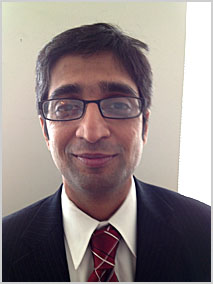
interview US technology giant Oracle has traditionally made its mark on the world through its mainstream enterprise software. From databases to ERP, if there’s a software platform which big business and government needs to keep its operations running, you can bet there’s an Oracle salesman out there somewhere trying to sell them a package to meet their needs.
However, recently Oracle’s been making rapid in-roads into one end of town it hasn’t traditionally been a dominant player in — core banking platforms. Rival SAP might have knocked over the Commonwealth Bank, but Oracle has a leg in the door at National Australia Bank and Suncorp, and shortly might have much more than that if things go according to plan. To support these plans, the vendor recently announced its new Oracle Banking Platform, a platform which NAB has already rolled out to its UBank brand. In the wake of this announcement, Delimiter recently conducted an interview with Ashwin Goyal, Oracle’s global vice president & general manager, Financial Services.
Can you outline the relationship between the i-flex acquisition which Oracle made in 2005 and its current suite of banking products? That is, it appears as if the FLEXCUBE product line is based on i-flex technology, and that the new Oracle Banking Platform suite released this week is a complementary product which builds on FLEXCUBE’s underlying capabilities?
Oracle Banking Platform is a complementary product to our Oracle FLEXCUBE solution and these are 2 different products. Oracle Banking Platform is built on Oracle Fusion Middleware and Oracle Database technologies.
In Australia, we’re currently seeing a wave of core banking systems replacements as major financial institutions migrate off legacy technology. Are you seeing this trend globally, and where would you position Australia compared with other first-world countries in terms of this trend?
We see the Australia market as being ahead of other leading economies when it comes to migrating off decades old legacy technology to new modern banking platforms. Australia is the second largest banking market by market capitalisation. It seems that the Australian Banks have been able to weather the global financial crisis better than some other large banks.
Are you seeing significant implementation differences in Australia with respect to core banking systems migrations, compared with other first-world countries?
Implementations tend to look fairly similar. We anticipate other banks will look to see the avantages gained by the Australian banks as they look to transform themselves.
There has been a bit of confusion around the implementation of Oracle technology at NAB. Can you confirm whether the bank and its subsidiary brank UBank are deploying FLEXCUBE, OBP, or both?
NAB has deployed the Oracle Banking Platform only at their subsidiary brand UBank.
Similarly, it was previously believed that Suncorp had definitively picked Oracle as the provider of its next-generation banking platform, but it appears as if the company is still evaluating suppliers. Can you confirm the status of Oracle’s involvement in that project?
As part of Suncorp’s transformation journey, they have focused first on deploying the customer capability through Oracle CRM On Demand. Phase 2 of their program will look to replace the CSC Hogan core banking system with more components from the Oracle Banking Platform.
What conclusions has Oracle come to in terms of the long-term return on investment, both financially and from a market competitiveness viewpoint, from the implementation of core banking replacement projects in major financial institutions?
Declined to answer.
What specific features of Oracle’s banking platforms are you seeing most interest and excitement in from customers?
Interest in the capabilities of the Oracle Banking Platform vary depending on what specific need each customer wants to address first, Some examples include:
- Relationship Centric Model – This allows customers to move from a product centric view to a customer centric view allowing pricing to be configured at the relationship level. Tracking limits and collateral for a customer and not just a product.
- Enterprise Originations – Many banks have multiple origination solutions. Only Oracle Banking Platform delivers an Enterprise Originations capability that can originate products that are on the Oracle Banking Platform as well as 3rd party product processors such as Credit Cards or Insurance products. The Originations capability supports both individual products origination as well as bundles and packages.
In general, what are some of the top-level trends which you see coming up repeatedly amongst Oracle’s major banking customers?
Banks looking to improve their cost to income ratio; banks looking to put customer at the heart of the business model; adapt to a more highly regulated environment; dealing with the operational risk of running very old core systems where there are little skills available to maintain them.
Banking platforms are some of the most complex technology products available. To what extend is Oracle able to customise its products in this line for specific customers? That is, can this truly be described as “out of the box” software, or will each customers’ platform differ significantly?
The Oracle Banking Platform is built on Oracle Fusion Middleware and Oracle Database technologies. The solution is open and is configured through metadata, Java and Oracle ADF user experience. Banks deploying our solution will configure the product but customizations should be minimal there by enabling our customers to continually uptake new functionality that can improve their business.
Image credit: Oracle

